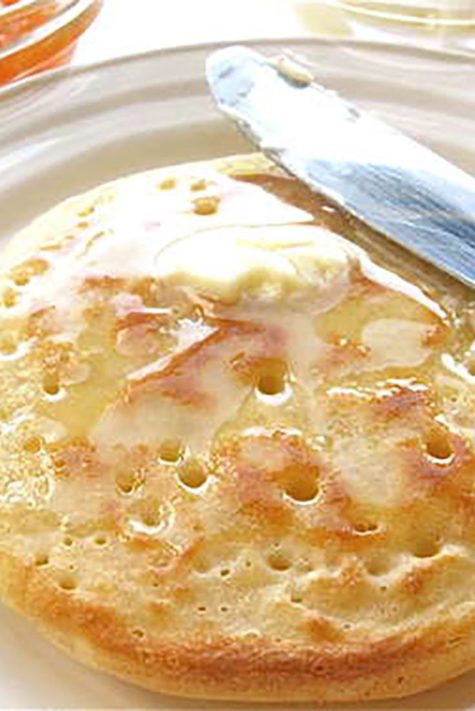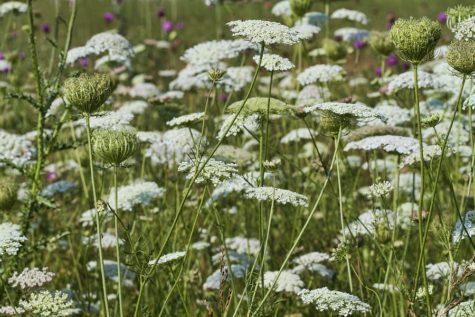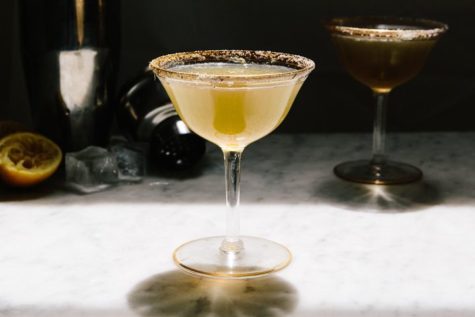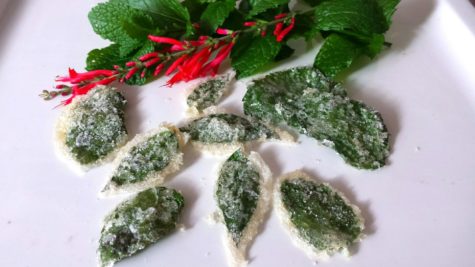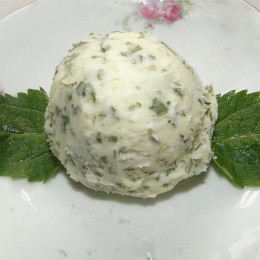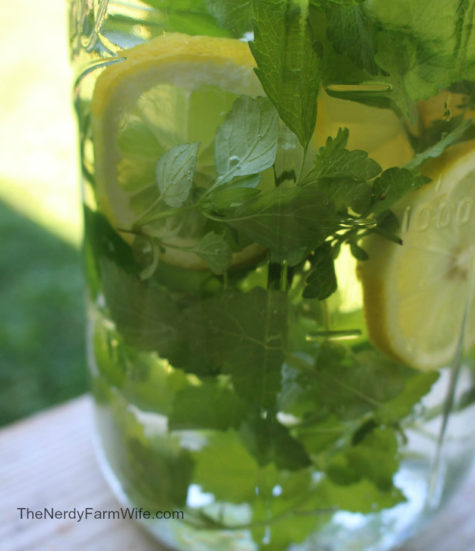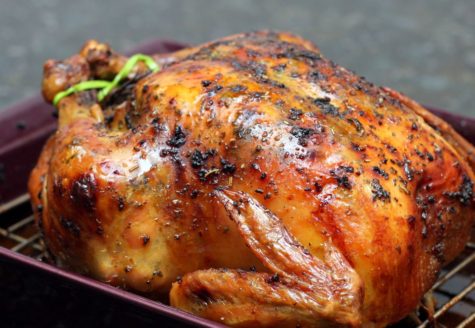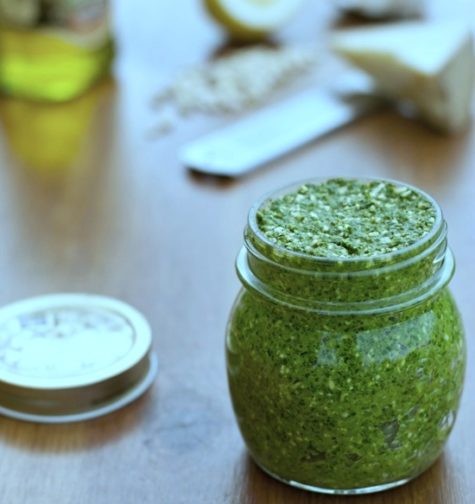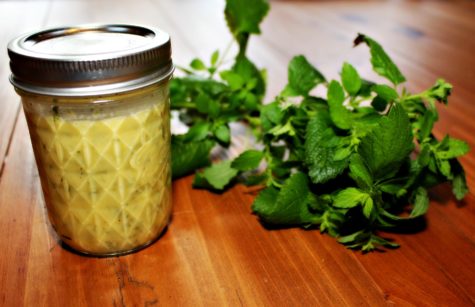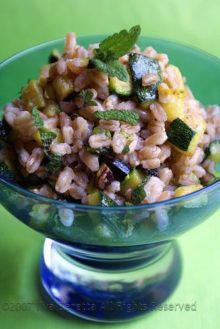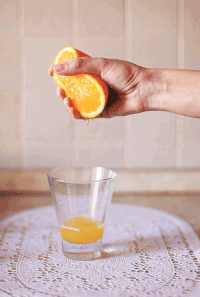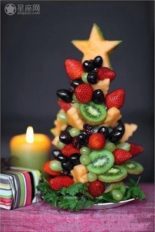Recipes
A Crumpet Recipe
What is a crumpet? This traditional British teatime treat is midway between English muffin and pancake. Like an English muffin, it’s full of holes, perfect for collecting rivulets of melted butter. But it’s also moister and thinner – more like a small pancake.
These are best enjoyed toasted, and spread with butter, jam, and/or clotted cream. Since their holes reach to the outside crust, there’s no need to split them before toasting.
You can make crumpets without English muffin rings (or cleaned tuna cans), but they’ll be perfectly round and ever so much nicer looking if you use rings. Here’s a recipe from King Arthur Flour.
A Great Crumpet Recipe
Ingredients:
- 1 1/2 cups lukewarm water
- 1 cup lukewarm milk
- 2 tablespoons melted butter
- 3 1/2 cups Unbleached All-Purpose Flour
- 2 1/2 teaspoons instant yeast
- 1 teaspoon baking powder
- 1 1/4 teaspoons salt
Instructions:
Combine all of the ingredients in a bowl, and beat vigorously for 2 minutes. A stand or hand mixer, set on high speed, work well here.
Cover the bowl, and let the batter rest at room temperature for 1 hour. It will expand and become bubbly. Towards the end of the rest, preheat a griddle to medium-low, about 325°F. If you don’t have an electric griddle, preheat a frying pan; it shouldn’t be as hot as the temperature you use to cook pancakes.
Lightly grease the griddle or frying pan, and place well-greased 3 3/4″ English muffin rings in the pan, as many as will fit. (If you don’t have English muffin rings, use well-cleaned tuna cans, from which you’ve removed the top and bottom.) Pour sticky batter by the scant 1/4-cupful into each ring; a muffin scoop works well here.
After about 4 minutes, use a pair of tongs to slip the rings off. Cook the crumpets for a total of about 10 minutes on the first side, until their tops are riddled with small bubbles/holes. They should be starting to look a bit dry around the edges. Their bottoms will be a mottled, light-golden brown.
Note: They probably won’t be as full of holes as store-bought crumpets; that’s OK.
Turn the crumpets over, and cook for an additional 5 minutes, to finish cooking the insides and to brown the tops gently. This isn’t traditional; “real” crumpets are white on top, but the crumpet police won’t chastise you for adding a little color to the tops.
Remove the crumpets from the pan, and repeat with the remaining batter, until all the crumpets are cooked. Serve warm. Or cool completely, wrap in plastic, and store at room temperature. To enjoy, warm in the toaster. Serve with butter, or butter and jam.
Borrowed from: The Prosperity Project
Queen Anne’s Lace Jelly
- 18 large Queen Anne’s lace heads
- 4 Cups water
- ¼ Cup lemon juice (fresh or bottled)
- 1 Package powdered pectin
- 3 ½ Cups + 2 Tbsp. sugar
Bring water to boil. Remove from heat. Add flower heads (push them down into the water). Cover and steep 30 minutes. Strain.
Measure 3 cups of liquid into a 4 – 6 quart pan. Add lemon juice and pectin. Bring to a rolling boil stirring constantly. Add sugar and stir constantly. Cook and stir until mixture comes to a rolling boil. Boil one minute longer, and then remove from heat.
Add color (pink) if desired. Skim. Pour into jars leaving ¼” head space. Then process in a hot water bath for 5 minutes.
Makes about 6 jars
Important Notice:
Historically, Queen Anne’s lace was used for medicinal and contraceptive purposes. Avoid it if you are pregnant, and check with your doctor if you are currently taking medications. More information about this wild herb can be found here: Encyclopedia of Herbology – Wild Carrot
The carrot family contains a number of poisonous look-alikes, most notably poison hemlock. Once the fruit has formed, it is easy to tell them apart, but less so when the plants still only have leaves.
When foraging, always choose high-quality landscapes (not next to the highway or on post-industrial or sprayed sites), and make sure to obtain permission if it is not your own yard. If possible, go out with an experienced forager.
Found at: Herbal Riot
Queen Anne’s Lace Cognac Apéritif
On late-summer evenings, I take the chill off with a cognac apéritif, the rim of the glass dipped in spicy Queen Anne’s Lace.
For the rim:
- 3 tablespoons dried Queen Anne’s Lace fruits
- 1 1/2 tablespoons fine sugar
Crush the dried Queen Anne’s Lace fruits with the sugar and mix thoroughly. (To save effort for multiple drinks, we made a larger batch with the same 2:1 ratio.) Spread the mixture on a saucer or plate that is larger than the diameter of the glass rim. Moisten the rim of the glass by dipping it upside down in a shallow bowl of water and let the excess water drip off for a few seconds. Dip the moistened rim in the Queen Anne’s Lace/sugar mixture, pressing down firmly. The mixture should cling to the rim where moistened. Gently shake off any excess.
Note: Instructions on collecting the Queen Anne’s Lace fruits can be found here: Queen Anne’s Lace
For the drink:
- 2 ounces cognac (I suggest Pierre Ferrant 1840)
- 3/4 ounce fresh Meyer lemon juice or bergamot juice
- 3/4 ounce honey syrup (equal parts honey and hot water)
- 1 teaspoon dried Queen Anne’s Lace fruit
In a cocktail shaker, combine cognac, lemon juice syrup, and ice. Shake vigorously for half a minute or until chilled. Pour the mixture through a strainer (to remove the Queen Anne’s Lace bits) and into the rimmed glass. Serve immediately.
Makes 1
Important Notice:
Historically, Queen Anne’s lace was used for medicinal and contraceptive purposes. Avoid it if you are pregnant, and check with your doctor if you are currently taking medications. More information about this wild herb can be found here: Encyclopedia of Herbology – Wild Carrot
The carrot family contains a number of poisonous look-alikes, most notably poison hemlock. Once the fruit has formed, it is easy to tell them apart, but less so when the plants still only have leaves.
When foraging, always choose high-quality landscapes (not next to the highway or on post-industrial or sprayed sites), and make sure to obtain permission if it is not your own yard. If possible, go out with an experienced forager.
Found at: Food 52
Candied Lemon Balm Leaves
This is a favorite kid activity around here! Beat an egg white with a tiny bit of water. Dip fresh lemon balm leaves in the mixture, then dip in sugar. Lay the coated leaves on a parchment lined baking sheet. Place the baking sheet in a 200°F oven until the leaves look dry, but not browned. Check after 20 minutes and every 5 to 10 after that.
Use to decorate ice cream, cakes, cookies, cupcakes and other confections.
Found at: The Nerdy Farm Wife
Lemon Balm and Honey Butter
Mix half a stick (4 tablespoons) of softened butter with a pinch of finely chopped fresh lemon balm leaves. Add a drizzle of honey to taste. Yummy on hot fresh bread or biscuits!
Found at: The Nerdy Farm Wife
Lemon Balm Water
Fill a jar with fresh lemon balm leaves and a thinly sliced lemon. Pour in cold water until it reaches the top. Refrigerate for several hours. So refreshing on a hot day!
From: The Nerdy Farm Wife
Roasted Lemon Balm Chicken
- Handful of fresh lemon balm leaves, stems removed
- 1/4 cup or so of fresh sage leaves
- 1/4 cup (1/2 stick) butter, softened
- Salt and pepper, to taste
- 1 large roasting chicken
- 1 teaspoon garlic powder
- 2 tablespoons olive oil
Preheat oven to 400°. Trim herb leaves from stems; wash and pat dry. Set sprigs aside. Chop two-thirds of the leaves, and combine with the butter, salt, and pepper. Rinse chicken and pat dry. Loosen the skin in several places and insert the herb butter underneath. Rub chicken with salt, pepper, and garlic powder. Insert the remaining herb sprigs into the cavity of the chicken. Place breast-side-down in a roasting pan. Bake 30 minutes, then turn chicken over. Bake about 20 minutes longer. Makes 4 to 6 servings.
Found at: Bay Witch Musings
Lemon Balm Pesto
You will need:
- 2 cups fresh lemon balm
- 1/2 cup extra-virgin olive oil
- 3 or 4 cloves garlic
Blend all ingredients together in a food processor until chunky, but not too well blended. Use to baste broiled or grilled fish or chicken, or serve as traditional pesto over pasta. Makes about 2 cups.
Found at: Bay Witch Musings
Lemon Balm Vinaigrette
Ingredients:
- 3 tbls. lightly flavored olive oil
- 1 tsp. finely shredded fresh lemon balm leaves
- 1/8 tsp. salt
- 1/16 tsp. fresh ground black pepper
- 2 tbls. rice wine vinegar
Combine all ingredients just before using, for the freshest taste and brightest color. Use as a salad dressing with baby lettuces and touch of grated, aged Jack cheese, or toss with fresh steamed veggies (it’s delicious with asparagus!).
Found at: Bay Witch Musings
Lemony Zucchini With Farro
- 350 g/12.3 oz farro, you can also use brown rice
- 400 g/14.1 oz zucchini, diced
- 1 large lemon
- 4-5 tblsp chopped pistachio nuts
- A small bunch of lemon balm, finely chopped
- 1 clove of garlic, chopped
- Salt
- Olive oil
Boil the farro in abundant salted water until soft, it usually takes 20-30 minutes. Meanwhile you first either grate the zest of the lemon or you use a lemon zester and put it in a pan with the garlic and some olive oil.
Braise for a minute before adding the diced zucchini and go on braising until the zucchini is sift and golden. Add the pistachio nuts and the farro and then drizzle a little of lemon juice over it. Add the Lemon balm and stir. Serve!
Makes 4 servings.
Found at: Lucullian
